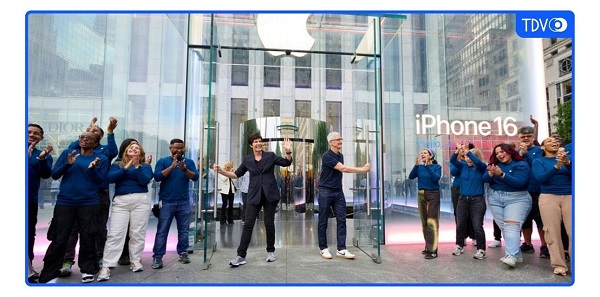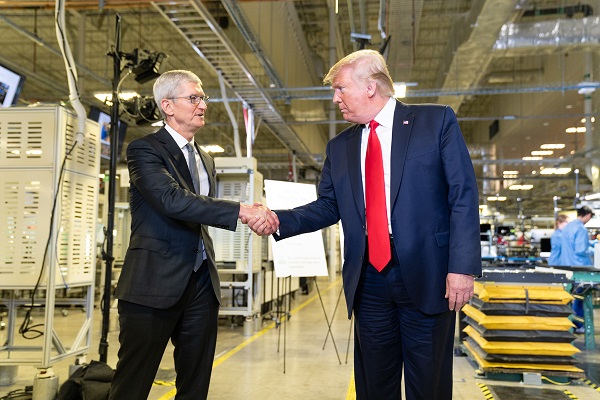Artificial Intelligence
OpenAI and Microsoft negotiations require definition of “artificial general intelligence”

From The Deep View
|
OpenAI’s bargaining chip
| A couple of relatively significant stories broke late last week concerning the — seemingly tenuous — partnership between OpenAI and Microsoft. | |
| The background: OpenAI first turned to Microsoft back in 2019, after the startup lost access to Elon Musk’s billions. Microsoft — which has now sunk more than $13 billion into the ChatGPT-maker — has developed a partnership with OpenAI, where Microsoft provides the compute (and the money) and OpenAI gives Microsoft access to its generative technology. OpenAI’s tech, for instance, powers Microsoft’s Copilot. | |
| According to the New York Times, OpenAI CEO Sam Altman last year asked Microsoft for more cash. But Microsoft, concerned about the highly publicized boardroom drama that was rocking the startup, declined. | |
|
|
| Microsoft, meanwhile, has been expanding its portfolio of AI startups, recently bringing the bulk of the Inflection team on board in a $650 million deal. | |
| Now, the terms of OpenAI’s latest funding round were somewhat unusual. The investment was predicated on an assurance that OpenAI would transition into a fully for-profit corporation. If the company has not done so within two years, investors can ask for their money back. | |
| According to the Wall Street Journal, an element of the ongoing negotiation between OpenAI and Microsoft has to do with this restructuring, specifically, how Microsoft’s $14 billion investment will transfer into equity in the soon-to-be for-profit company. | |
|
|
| Here’s where things get really interesting: OpenAI isn’t a normal company. It’s mission is to build a hypothetical artificial general intelligence, a theoretical technology that is pointedly lacking in any sort of universal definition. The general idea here is that it would possess, at least, human-adjacent cognitive capabilities; some researchers don’t think it’ll ever be possible. | |
| There’s a clause in OpenAI’s contract with Microsoft that if OpenAI achieves AGI, Microsoft gets cut off. OpenAI’s “board determines when we’ve attained AGI. Again, by AGI we mean a highly autonomous system that outperforms humans at most economically valuable work. Such a system is excluded from IP licenses and other commercial terms with Microsoft, which only apply to pre-AGI technology.” | |
| To quote from the Times: “the clause was meant to ensure that a company like Microsoft did not misuse this machine of the future, but today, OpenAI executives see it as a path to a better contract, according to a person familiar with the company’s negotiations.” | |
|
|
| This is a good example of why the context behind definitions matters so much when discussing anything in this field. There is a definitional problem throughout the field of AI. Many researchers dislike the term “AI” itself; it’s a misnomer — we don’t have an actual artificial intelligence. | |
| The term “intelligence,” is itself vague and open to the interpretation of the developer in question. | |
| And the term “AGI” is as formless as it gets. Unlike physics, for example, where gravity is a known, hard, agreed-upon concept, AGI is theoretical, hypothetical science; further, it is a theory that is bounded by resource limitations and massive limitations in understanding around human cognition, sentience, consciousness and intelligence, and how these all fit together physically. | |
| This doesn’t erase the fact that the labs are trying hard to get there. | |
| But what this environment could allow for is a misplaced, contextually unstable definition of AGI that OpenAI pens as a ticket either out from under Microsoft’s thumb, or as a means of negotiating the contract of Sam Altman’s dreams. | |
| In other words, OpenAI saying it has achieved AGI, doesn’t mean that it has. | |
| As Thomas G. Dietterich, Distinguished Professor Emeritus at Oregon State University said: “I always suspected that the road to achieve AGI was through redefining it.” |
Artificial Intelligence
Apple faces proposed class action over its lag in Apple Intelligence

News release from The Deep View
| Apple, already moving slowly out of the gate on generative AI, has been dealing with a number of roadblocks and mounting delays in its effort to bring a truly AI-enabled Siri to market. The problem, or, one of the problems, is that Apple used these same AI features to heavily promote its latest iPhone, which, as it says on its website, was “built for Apple Intelligence.” |
| Now, the tech giant has been accused of false advertising in a proposed class action lawsuit that argues that Apple’s “pervasive” marketing campaign was “built on a lie.” |
| The details: Apple has — if reluctantly — acknowledged delays on a more advanced Siri, pulling one of the ads that demonstrated the product and adding a disclaimer to its iPhone 16 product page that the feature is “in development and will be available with a future software update.” |
|
| Apple did not respond to a request for comment. |
| The lawsuit was first reported by Axios, and can be read here. |
| This all comes amid an executive shuffling that just took place over at Apple HQ, which put Vision Pro creator Mike Rockwell in charge of the Siri overhaul, according to Bloomberg. |
| Still, shares of Apple rallied to close the day up around 2%, though the stock is still down 12% for the year. |
Artificial Intelligence
Apple bets big on Trump economy with historic $500 billion U.S. investment

Diving Deeper:
Apple’s unprecedented $500 billion investment marks what the company calls “an extraordinary new chapter in the history of American innovation.” The tech giant plans to establish an advanced AI server manufacturing facility near Houston and significantly expand research and development across several key states, including Michigan, Texas, California, and Arizona.
Apple CEO Tim Cook highlighted the company’s confidence in the U.S. economy, stating, “We’re proud to build on our long-standing U.S. investments with this $500 billion commitment to our country’s future.” He noted that the expansion of Apple’s Advanced Manufacturing Fund and investments in cutting-edge technology will further solidify the company’s role in American innovation.
President Trump was quick to highlight Apple’s announcement as a testament to his administration’s economic policies. In a Truth Social post Monday morning, he wrote:
“APPLE HAS JUST ANNOUNCED A RECORD 500 BILLION DOLLAR INVESTMENT IN THE UNITED STATES OF AMERICA. THE REASON, FAITH IN WHAT WE ARE DOING, WITHOUT WHICH, THEY WOULDN’T BE INVESTING TEN CENTS. THANK YOU TIM COOK AND APPLE!!!”
Trump previously hinted at the investment during a White House meeting Friday, revealing that Cook had committed to investing “hundreds of billions of dollars” in the U.S. economy. “That’s what he told me. Now he has to do it,” Trump quipped.
Apple’s expansion will include 20,000 new jobs, with a strong focus on artificial intelligence, silicon engineering, and machine learning. The company also aims to support workforce development through training programs and partnerships with educational institutions.
With Apple’s announcement, the U.S. economy stands to benefit from a major influx of investment into high-tech manufacturing and innovation—further underscoring the tech industry’s continued growth under Trump’s economic agenda.
-

 2025 Federal Election1 day ago
2025 Federal Election1 day agoOttawa Confirms China interfering with 2025 federal election: Beijing Seeks to Block Joe Tay’s Election
-

 Energy2 days ago
Energy2 days agoIndigenous-led Projects Hold Key To Canada’s Energy Future
-

 Energy2 days ago
Energy2 days agoMany Canadians—and many Albertans—live in energy poverty
-

 Business2 days ago
Business2 days agoCanada Urgently Needs A Watchdog For Government Waste
-

 2025 Federal Election24 hours ago
2025 Federal Election24 hours agoHow Canada’s Mainstream Media Lost the Public Trust
-

 2025 Federal Election13 hours ago
2025 Federal Election13 hours agoBREAKING: THE FEDERAL BRIEF THAT SHOULD SINK CARNEY
-

 2025 Federal Election24 hours ago
2025 Federal Election24 hours agoReal Homes vs. Modular Shoeboxes: The Housing Battle Between Poilievre and Carney
-

 2025 Federal Election14 hours ago
2025 Federal Election14 hours agoCHINESE ELECTION THREAT WARNING: Conservative Candidate Joe Tay Paused Public Campaign






